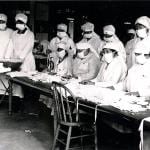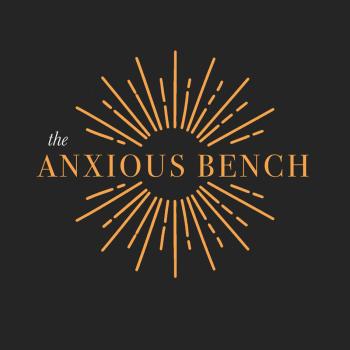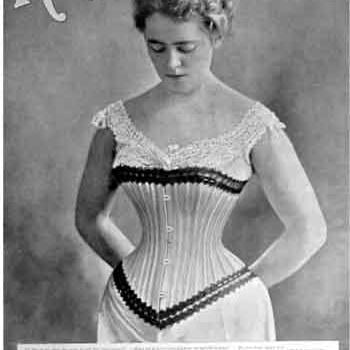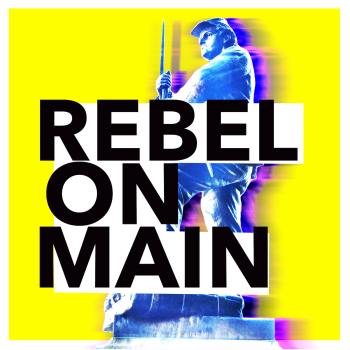I’m pleased to welcome Justin Vos to the Anxious Bench. Justin is a Ph.D. candidate at Florida State University. He is currently teaching and exploring the impact of immigration and ethnicity on twentieth-century evangelicalism. –David R. Swartz
***
The 1960s was an eventful decade, filled with new ideas and calls for societal transformation. In 1964, in one corner of North America, a young philosophy professor called for nothing short of revolution. Calvin Seerveld declared,
“Because you have been bought with the price of blood, because you are bound together by Jehovah’s jealous love, because your common calling is to act in the name of Christ unashamed, to turn the world upside down in the power of the Holy Spirit, Christian workers – let us shout it from the housetops – Christian workers, unite! For Christ’s sake! Unite!”
Seerveld gave that call to the Christian Labour Association of Canada (CLAC), a group mostly composed of Reformed Dutch Calvinists seeking to transplant and expand their form of Calvinism across North America.[1]
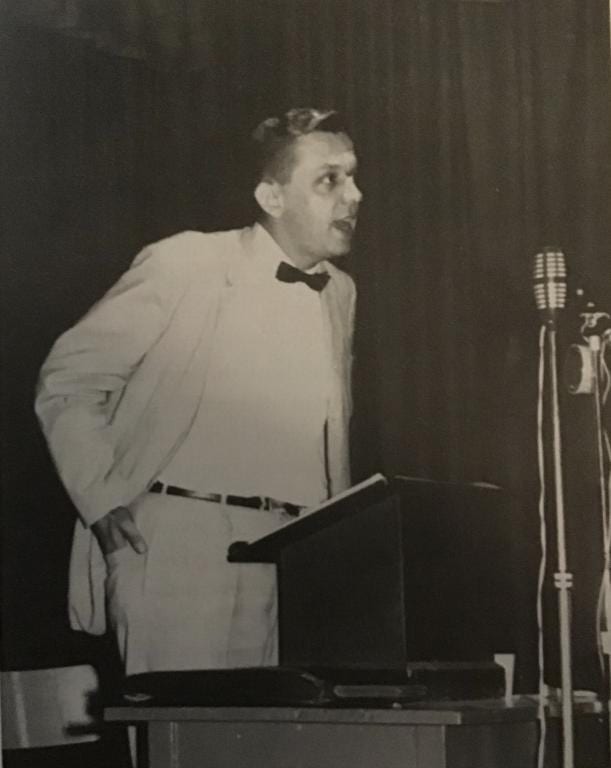
CLAC shakes up our thinking about the history of evangelicalism and its relationship to the wider world around it. Scholars have explored evangelical history from a variety of angles: political activism, intellectual development, and gender norms. Recent studies have traced evangelical connections in the corporate and economic realm, following evangelicalism’s relationship to the philosophy of free enterprise. CLAC provides a unique example of how one thread of evangelicalism engaged with broader culture, specifically, the world of labor relations.
Originating in the Canadian Dutch Reformed ethnic community in 1952, CLAC sat alongside a variety of other associations created by Dutch immigrants. Reaching beyond the traditional Christian institutions of schools and publishers, Dutch Canadians developed a farmers’ association, a credit union, and a political party. Through these various organizations, the community hoped to create a new form of Calvinist presence in North America.
Since the late 19th century, the Dutch Reformed community in the United States had developed a tight-knit network of churches, private Christian schools, newspapers, and publishers. Following the Second World War, Reformed Protestants moved from the Netherlands to Canada. These immigrants brought with them a desire to recreate the social structure of the Netherlands. Their system, developed from the legacy of the Reformed pastor and prime minister Abraham Kuyper, established a tri-fold social and political system dividing social organizations along Protestant, Catholic, and secular interests. Started by Canadian Dutch immigrants in 1952, CLAC developed out of a belief in this social structure as Reformed immigrants sought to expand the scope of confessional-based institutions, going beyond the traditional organizations then present within the Dutch ethnic community in the United States.
CLAC played a key role in developing the Dutch Reformed approach to life in Canada following WWII. In seeking to create a specifically Christian presence in the world of labor relations, CLAC ran into several early roadblocks. From its founding, CLAC fought the Ontario Labour Relations Board, seeking official recognition as a labor union which the Board repeatedly refused to provide. In 1963, the legal battle between CLAC and the Board reached the Ontario Supreme Court, which ruled that “[the Labour Relations Board] made a grievous error in the application of judicial principles.”[2] CLAC understood the Supreme Court decision as vindication after years of injustice, viewing the struggle for legal recognition as representative of a larger spiritual battle.[3]
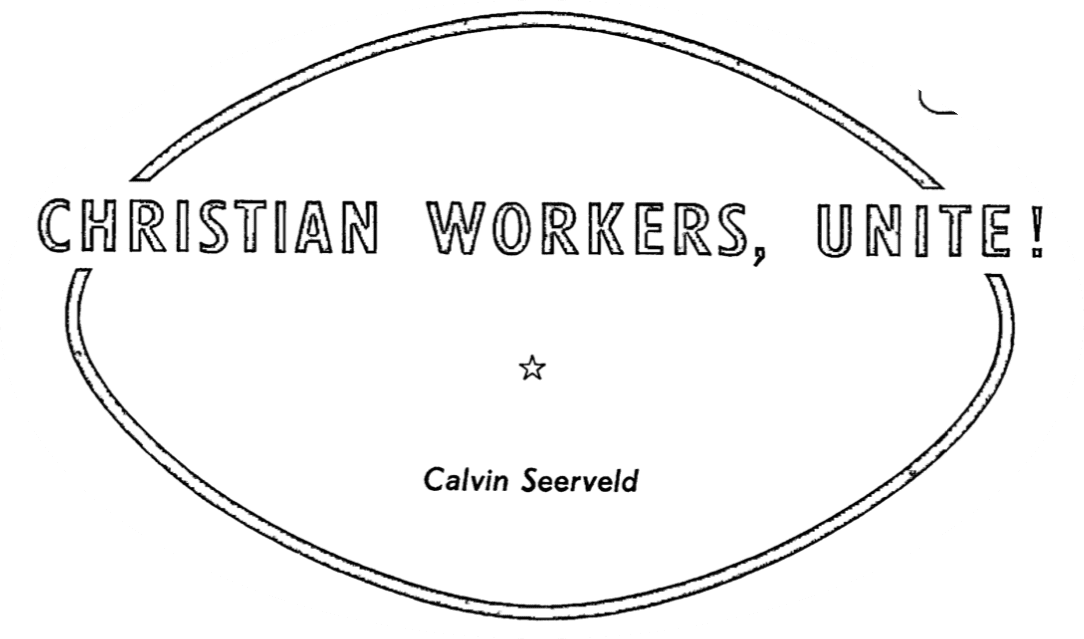 Following official union recognition, CLAC’s struggle against the labor establishment continued. In 1965, after the International Woodworker’s Association declared CLAC’s union status “phony,” the CLAC newsletter asked, “Will the Christian trade union movement cowardly give up and leave the direction of Canada’s social and economic life solely in the hands of men and organizations obviously committed to a false view of life?” CLAC understood their fight as a battle of competing worldviews, requiring workers to choose between “a Christian and a secular approach to labor relations.”[4] They believed that Canadian society suffered from spiritual division, evidenced by their fight against the secular labor establishment. The development of Christian organizations could be nothing less than revolutionary action. It is in the midst of this struggle that Seerveld called Christian workers to unite together to overturn the old labor order.
Following official union recognition, CLAC’s struggle against the labor establishment continued. In 1965, after the International Woodworker’s Association declared CLAC’s union status “phony,” the CLAC newsletter asked, “Will the Christian trade union movement cowardly give up and leave the direction of Canada’s social and economic life solely in the hands of men and organizations obviously committed to a false view of life?” CLAC understood their fight as a battle of competing worldviews, requiring workers to choose between “a Christian and a secular approach to labor relations.”[4] They believed that Canadian society suffered from spiritual division, evidenced by their fight against the secular labor establishment. The development of Christian organizations could be nothing less than revolutionary action. It is in the midst of this struggle that Seerveld called Christian workers to unite together to overturn the old labor order.
While CLAC used combative language and issued strong calls for action, they relied on traditional Dutch Calvinist theology as seen through the then-developing Neo-Calvinist framework to make their case. Calvin College professor H. Evan Runner, an intellectual leader of the movement, argued that CLAC created a new appreciation for the traditional Reformed understanding of covenantal theology.[5] CLAC leader Gerald Vandezande argued that the formation of Christian organizations derived from the “power of the Word of God.”[6] Based on the immigrants’ Dutch experiences and bolstered by the philosophical developments of Neo-Calvinists, CLAC sought to faithfully live out their Reformed theology in the workplace.
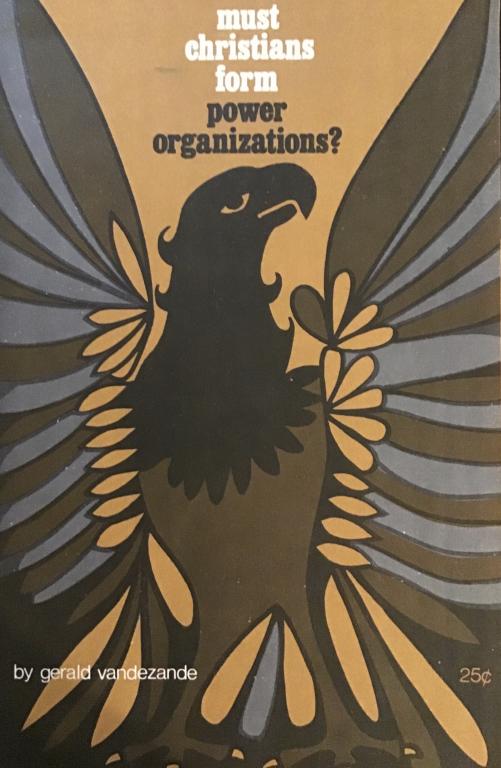 Despite CLAC’s use of traditional Calvinist ideas, the more established Dutch Reformed community in the United States did not fully appreciate or support the Canadian push for new confessional organizations. One author in the progressive-leaning American-based Reformed Journal criticized the Dutch Canadians as having “come to America with a sense of crusade.” The Reformed Journal further complained that, “Many things written in Canada…suggest that the Canadians think many people in [the United States] are not only wrong but weak, not only mistaken but unfaithful. It often appears that our Canadian brethren are not sure that the thinking of some Americans is respectably Calvinistic…”[7] This theological debate between Dutch Americans and Canadians developed out of the different histories between the two groups. The Reformed Journal hoped to steer the American Dutch Reformed community away from an ethnic-based isolation and towards greater connection with American Christianity. So, the Canadian call for new confessional organizations pushed against the status quo that had developed within the American community. In advocating for new forms of confessional organizations, the Dutch Canadians collided with the U.S.-based Dutch Reformed community in the process of becoming American.
Despite CLAC’s use of traditional Calvinist ideas, the more established Dutch Reformed community in the United States did not fully appreciate or support the Canadian push for new confessional organizations. One author in the progressive-leaning American-based Reformed Journal criticized the Dutch Canadians as having “come to America with a sense of crusade.” The Reformed Journal further complained that, “Many things written in Canada…suggest that the Canadians think many people in [the United States] are not only wrong but weak, not only mistaken but unfaithful. It often appears that our Canadian brethren are not sure that the thinking of some Americans is respectably Calvinistic…”[7] This theological debate between Dutch Americans and Canadians developed out of the different histories between the two groups. The Reformed Journal hoped to steer the American Dutch Reformed community away from an ethnic-based isolation and towards greater connection with American Christianity. So, the Canadian call for new confessional organizations pushed against the status quo that had developed within the American community. In advocating for new forms of confessional organizations, the Dutch Canadians collided with the U.S.-based Dutch Reformed community in the process of becoming American.
Why care about the internal battles of the Dutch Reformed? Although tied to specific theologies and experiences, the concerns of Dutch community overlap with broader evangelical concerns. Dutch Calvinists are scattered throughout the historiography of evangelicalism. Recently, the Dutch have made an appearance here on the Anxious Bench. David Swartz discussed the Institute of Christian Studies, highlighting how graduates of the Dutch Reformed institution impacted the broader evangelical world, while Kristin Kobes Du Mez described how the broader world of evangelical pop culture influenced the Dutch Reformed community.
The development of CLAC parallels more recent developments in evangelicalism. Glance through the advertisements of recent evangelical magazines and you will be introduced to a world of Christian businesses and organizations. This is not simply Christian publishers advertising the newest study bible or Christian colleges promoting their academic programs, but a range of services from insurance to credit unions to fitness coaching. Christian healthcare cost-sharing organizations promote themselves as a Biblical answer to health insurance. Christian credit unions and investment groups emphasize using funds to “advance God’s kingdom.” Even Christian retirement communities promote themselves as providing a “spiritually fulfilling retirement.”[8] Similar to the Dutch Canadian community of the 1950s and 1960s, evangelicals are creating a world of internal organizations and services.
The Dutch Reformed community’s battle over confessional organizations demonstrates competing emphases. U.S. progressives saw the Canadian proposal as a step backward, forcing members to join Christian organizations cloistered off from the rest of society, while Dutch Canadians viewed CLAC and other groups as a necessary way to be Christian in a religiously plural society. These differences highlight how various types of evangelicals have wrestled with understanding how to live in a diverse society, a struggle still relevant today.
[1] Craig Bartholomew, ed., In the Fields of the Lord: A Calvin Seerveld Reader (Carlisle, U.K.; Toronto: Piquant, 2000), 237.
[2] Ed Grootenboer, In Pursuit of Justice, So Far, So Good, (Mississauga, Ontario: Christian Labour Association of Canada, 2005), 41-42.
[3] H. Evan Runner, Can Canada Tolerate the C.L.A.C.?: The Achilles’ Heel of a Humanistic Society, (Rexdale, Ontario: Christian Labour Association of Canada, n.d.), 5.
[4] “Congress Attacks CLAC,” January 1965 and “A Declaration of War,” November 1965 in Christian Labour Association of Canada, A Union that Works: CLAC’s story from the pages of the union’s national magazine, (Christian Labour Association: Mississauga, ON, 2012): 48-49; 51-52.
[5] H. Evan Runner, Can Canada Tolerate the C.L.A.C.? The Achilles’ Heel of a Humanistic Society (Rexdale, ON: Christian Labour Association of Canada, 1967): 8.
[6] Gerald Vandezande, Must Christians Form Power Organizations? (Rexdale, ON: Kuntz & Vanderiet Press Ltd., n.d.): 8.
[7] George, Stob, “Critical issues in the labor problem,” Reformed Journal 6, no. 10 (November 1956): 4.
[8] For example, see Christianity Today, (April 2020): 61-62.


